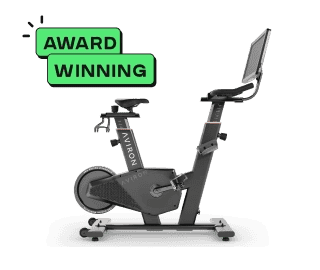Introduction to Rowing for Seniors
No matter how old you are, there are always new chances waiting for you. It is never too late to make physical fitness and general well-being a priority in your life. Rowing has evolved into a satisfying and beneficial exercise for a large number of senior citizens. Rowing's reputation as a low-impact yet total-body workout has helped it acquire appeal among senior citizens all over the world.
Why Rowing Matters for Seniors
Fitness and Muscle Tone
Rowing is an excellent activity for senior citizens since it helps maintain fitness and muscle tone. As people get older, they experience a normal loss of muscular mass. Rowing works a variety of muscle groups all at once, including the arms, back, shoulders, legs, and core muscles. It assists in the development of strength and endurance, so supporting a lifestyle that is both healthier and more active.
Cardiovascular Health
The cardiovascular benefits of rowing are well-documented. The heart rate increases and oxygen consumption rises, making the cardiovascular system more effective. This lowers the probability that you'll get cardiovascular illnesses, which are very common in the elderly.
Mental Health and Cognitive Function
Rowing is not only beneficial for physical health but also for mental well-being and cognitive function. The rhythmic and repetitive nature of rowing promotes relaxation and stress reduction. Physical activity has also been shown to enhance cognitive functions and delay cognitive decline associated with aging.
Lifespan and Satisfaction with It
Seniors who engage in regular physical activity, such as rowing, live longer and have a higher quality of life. Incorporating rowing into a senior's daily routine has been shown to improve physical and mental health, independence, and general functioning in older adults.
Immune System Enhancement
Seniors' immune systems are strengthened by regular activity, such as rowing. It strengthens the immune system, lowers the risk of infections and diseases, and enhances overall health and vigor.
Increased Levels of Restful Sleep
Rowing is one form of regular physical activity that has been shown to improve sleep quality in older adults. It assists in the regulation of sleep patterns, encourages sleep that is deeper and more restful, and decreases the risk that one may experience sleep disruptions.
Additional Benefits of Rowing for Seniors
Social Benefits
Rowing offers more than just physical fitness; it also fosters relationships. Joining a local rowing club or participating in rowing classes provides opportunities to meet like-minded individuals, building a sense of community and camaraderie. Seniors can stay socially engaged, which is essential for emotional well-being.
Weight Loss and Metabolic Boost
Rowing significantly contributes to weight loss efforts. It is a fantastic way to burn calories and boost metabolism, helping seniors maintain a healthy weight. Maintaining a balanced weight is crucial for preventing health issues such as diabetes and joint problems.
Improved Balance and Flexibility
The benefits of rowing include improved flexibility and balance, both of which might suffer with advancing age. During rowing, you work out a variety of muscle groups, which helps improve balance and lowers the danger of falling. In addition to improving flexibility and range of motion, stretching is an important component of rowing.
Improved Posture
Rowing improves posture by strengthening the muscles used to keep the spine in a neutral position. Seniors who row regularly report improved posture, which in turn reduces back discomfort and boosts self-esteem.
Improved Lung Capacity
Rowing is a full-body cardiovascular workout that puts the heart and lungs to the test. Rowing regularly helps improve lung capacity, helping elders to breathe more efficiently. This can result in enhanced energy and endurance in daily tasks.
Seniors may find that rowing consistently is a helpful approach to reducing stress and improving their ability to unwind. Rowing's rhythmic and repeated activity, whether combined with the calming atmosphere of water or a quiet interior location, can be very beneficial to one's mental health and relaxation.
Instructions for a New Rower
Familiarize Yourself with the Rowing Machine
Spend some time getting to know the various aspects of the rowing machine, such as the seat, footrests, handle, and resistance levels. If necessary, consult the user handbook or seek assistance.
Warm-up
To prepare your body for rowing practice, spend 5-10 minutes doing some light cardio like jogging or cycling. You might think of it as a warm-up for your muscles.
Selecting Appropriate Tools
Purchasing appropriate gear is essential before beginning rowing. Especially for novices and the elderly, an indoor rowing machine is a sensible option. Aviron machines, for example, provide multiple resistance settings, so users may tailor their workout to their specific needs.
Obtaining Professional Advice
While rowing is a low-impact workout, it is critical to acquire proper form and technique to avoid injury. Working with a fitness professional, especially early on, can be highly useful. They can show you how to perform the rowing stroke successfully and securely.
Aiming Reasonably
Like any other form of exercise, rowing should be done gradually to avoid injury. Create a plan of action and keep tabs on your progress. There are a variety of ways to measure rowing ability, including time, number of strokes, and rate of progression. Keep in mind that the real goals here are development and fitness on an individual level.
Track your Progress
Record Your Rowing Sessions to monitor your improvement keeping a record of your rowing sessions will allow you to monitor your improvement over time. Take note of the amount of distance rowed as well as the stroke rate and any personal milestones that have been reached. This will assist you in maintaining your motivation and keeping track of your progress.
Including Rowing in Your Daily Routine
Rowing may be difficult to incorporate into your daily routine at first, but with persistence, it will become second nature. Set out a certain time each day to row, and gradually increase the length and intensity of your sessions as your fitness improves.
Short Sessions First
If you're new to rowing or have a hectic schedule, start with shorter sessions. Rowing for 10 to 15 minutes can be beneficial. Increase the duration gradually as you feel more comfortable and find time in your schedule.
Prioritize Consistency
When it comes to obtaining the benefits of rowing, consistency is essential. Aim to row at least several times per week, if not every day, to maintain a routine and maximize the exercise's benefits.
Set Goals
Create personal goals that are attainable to keep yourself motivated and on track. A sense of purpose and achievement can be gained from setting objectives for yourself, whether they involve raising your stroke rate, rowing a predetermined distance, or attaining a particular time.
Tips for Seniors on Safety
Always check your doctor before beginning any workout program, especially if you have pre-existing medical issues. To prepare your body and prevent tension, warm up before each workout and cool down afterward. Stop working out right now if you have any pain, and get help from a specialist.
Engage Your Core
To offer stability and preserve your lower back during rowing, it is important to actively engage your core muscles throughout the stroke. This ensures that normal form is maintained and eliminates the possibility of undue tension being placed on the muscles in your back.
Stay Hydrated
If you want to row at your best, you need to make sure you drink lots of water before, during, and after each workout.
Rowing can help you stay motivated
Maintaining motivation is essential for making rowing a lifelong habit. Set goals, track your progress, and celebrate your minor triumphs. Joining a community, whether online or in person, can also help you maintain your passion. Remember that the journey is more important than the destination.
Participate in Rowing Challenges
To add excitement and a sense of friendly competition to your rowing routine, participate in rowing challenges or contests. These occasions can bring a new level of inspiration as well as a distinct goal to work for.
Give Yourself a Treat
Honor the steps along the journey by holding celebrations. Reward yourself with a massage, some new exercise gear, or a fun outing when you hit milestones along the way. These incentives have the potential to act as a source of ongoing inspiration and drive.
Conclusion
The benefits of rowing for elders are numerous, ranging from enhanced physical and mental health to opportunities for interaction with others. It's a fun way to improve your health and quality of life, and it can be modified for people of all fitness levels.
Is your trip in a boat ready to begin? Check out Aviron's website right now to learn more about their selection of high-quality rowing machines.
FAQs
Q: Can arthritis sufferers find relief by rowing?
A: By building up the muscles that support and move the joints, rowing is an excellent activity for anyone coping with arthritis. However, before beginning a new fitness program, it is essential to talk to your doctor.
Q: Is it safe for people with back issues to go rowing?
A: If you know how to row properly, you can do it even if you have back problems. It can help build muscle in the back, which may make the back feel better. However, it is important to check with a doctor or fitness expert to be sure rowing is safe for you.
Q: When starting, how long should you row for?
A: Shorter workouts (10-15 minutes) are fine for beginners; as fitness levels rise, longer sessions can be attempted. The most important thing is to go at your own pace and listen to your body.
Q: Can older adults who have never exercised before benefit from rowing?
A: Due to its moderate impact, rowing is an excellent first workout. However, before starting any new fitness program, it is recommended to obtain expert instruction to acquire good form and technique and to check with a healthcare specialist.


